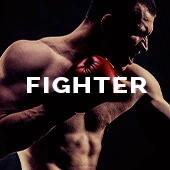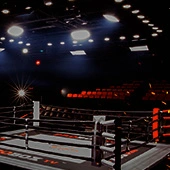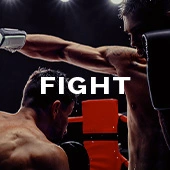by Cliff Rold
Maybe it’s what Floyd Mayweather hinted at in the aftermath of his first fight with Marcos Maidana. Maybe he’s so good that he can choose to make a fight exciting, that he let Maidana test him.
Maybe.
The broader picture of boxing history says that’s unlikely.
Floyd Mayweather is 37 years old. Young for an accountant, it’s getting up there for even the finest prizefighters. Archie Moore, George Foreman, and Bernard Hopkins, all men who competed successfully, as they get closer to and past the age of 40, found it harder as the clock ticked. Sugar Ray Robinson still had some good wins left in him as he approached 40 as well. He took some losses a sweeter Sugar would not have.
Their like is few and far between.
Rather than choosing to be fan friendly last time, Mayweather might be at a point where he’s going to be fan friendly whether he wants it or not against the sort of anarchic, hellbent for leather style Maidana represents,
It’s a matter of the right kind of aggression versus age and aging legs. Father Time always arrives. Sometimes, he wins.
One of the more shocking examples in recent years came at Flyweight in 2012. While 35 has always been old in the lower divisions, Thailand’s Pongsaklek Wonjongkam was riding a high during his second reign at 112 lbs. A good boxer with some pop, excellent speed, and combination punching at prime, Wonjongkam was still competing at a high level. After breaking the consecutive defense record of Miguel Canto in his first go as champion, Wonjongkam had managed an upset of undefeated Koki Kameda to regain his second title and defended successfully against a hot Edgar Sosa in October 2011.
In March 2012, matched with journeyman Sonny Boy Jaro, it looked like the sort of stay busy paycheck defense lots of fighters take on. It was anything but. Unable to evade the attack of a Jaro whose best chances were to land heavy hands, Wonjongkam took a beating from the opening round and was dropped several times before being stopped in round six.
Hopkins is an ongoing example of how naked aggression can be a test for the aging. In 2005, then but a mere 39, Hopkins lost a pair of hotly debated decisions to Jermain Taylor. Like the Mayweather-Maidana fight, the older man threw less early as the younger man roared out after him. Over the course of both fights, Hopkins gradually contained Taylor’s aggression but not before being dug into scoring holes in the eyes of the official judges.
It didn’t matter that many observers thought Hopkins won either or both of the contests. Hopkins, even a few years earlier, would probably have been more active and made the issue more clear. At 39, also potentially affected by continuing to make Middleweight, he was simply more vulnerable to the aggression of Taylor.
At 45, and 46, Hopkins drew and then defeated Jean Pascal for history’s (and the WBC’s) Light Heavyweight crown. In both outings, he had to wade through moments of turbulence not because of the skill of Pascal but because of his combination of explosiveness and aggression. In the first, Hopkins came off the floor twice. In the second, he built a lead early before surviving some rugged spots down the stretch of the fight.
It was enough to nod knowingly at what Hopkins would have done with a Pascal in his younger days. He still got it done with age. It just wasn’t as easy and took two cracks.
Moore carried an eraser with him well past 40. He needed it. In 1958, just shy of his 42nd birthday, Moore was dropped three times in the first round by the plodding but heavy-handed Yvonne Durelle. He was down again in the fifth. Moore came back in an epic contest (one that lasted some four or five hours if one takes their history from Showtime’s Masters of Sex), dropping Durelle in rounds seven and ten before lowering the boom in the eleventh.
Would Durelle have had the same success against a younger Moore, against a man who saw the punches coming and the reflexes to move just a split second sooner? We’ll never know. Having seen Durelle once, Moore was more than prepared for the attack the second time around. When they fought again in 1959, Durelle was knocked out in three.
Moore’s age had to play a part in needing a sequel at all.
At around the same time, Robinson was losing, and then regaining his final Middleweight crown in 1957 and 58. Carmen Basilio made wars with everyone. A Hall of Fame great in his own right, the free swinging Welterweight Champion moved up to face Robinson in what would ultimately be a two-fight clinic on ring savagery. Both were named Ring Magazine’s Fight of the Year.
Basilio might have troubled Robinson at any point. Robinson didn’t quite have the bounce in his step or zing in his shots of his Welterweight prime or in besting Jake LaMotta for the Middleweight crown in 1951. It made Basilio it all the harder. Robinson thought he’d done enough to win what was a split decision the first time. The referee agreed at a rounds tally of 9-6.
In the rematch, again a split decision, Robinson was more decisive, closing Basilio’s left eye with one of the more grotesque swellings a fight fan could ever see. It was another long, hard night.
Mayweather backers can draw on the examples of Robinson-Basilio, Moore-Durelle, Hopkins-Pascal as examples of an older fighter improving in the second meeting. In all of those cases, the younger man was bested the second time because the older man was, at root, the better one. Hopkins-Taylor is an example of the issues largely remaining the same.
Maidana will want to look at the latter. Mayweather can feel secure with the former. When aggression meets age and aging legs this weekend, nothing is certain.
Chances are we get another interesting fight.
Cliff Rold is the Managing Editor of BoxingScene, a founding member of the Transnational Boxing Rankings Board, and a member of the Boxing Writers Association of America. He can be reached at roldboxing@hotmail.com


